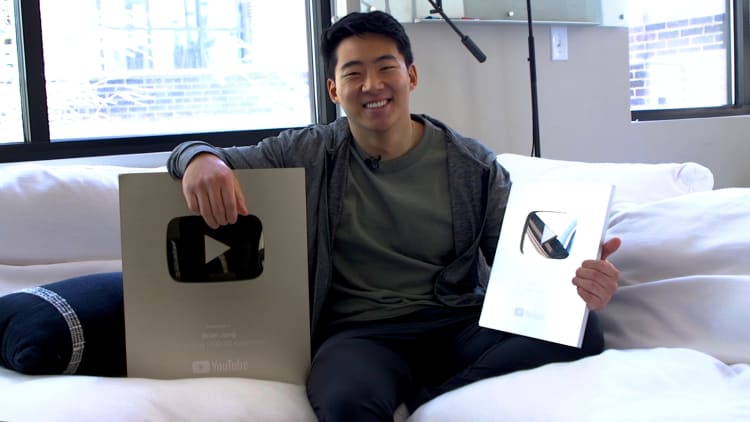The U.S. government reaching its debt ceiling has major implications for the domestic and global economies.
The debt ceiling is the amount of money the U.S. is authorized to borrow to pay its bills, including Social Security benefits, military salaries and more. When it hits that limit, as it has, the government has to use other resources, like cash reserves, to keep the lights on.
When those run out, the country risks defaulting on its debts, which would freeze benefits for millions of American households and likely send the economy into a recession.
Hitting your own "debt ceiling" or reaching the spending limit on your credit cards can cause trouble for your personal finances.
Credit cards can be a useful tool for financing major purchases and earning lucrative rewards like airline miles. But carrying a balance on those cards can lead to troublesome high-interest debt and lower your credit score if it brings your credit utilization ratio too high.
You want a good credit score — 670 or higher for FICO scores — because it shows lenders and other interested parties that you're good at managing debt. A good credit score can help you qualify for and receive better rates on mortgages, auto loans and more. You may not even be able to rent an apartment without a good score.
Credit utilization is one of the five factors that make up your credit score, and understanding how it works can help you improve yours.
What is your credit utilization rate?
Your credit utilization rate is the percentage of credit you are using relative to the credit available to you. If you have a single credit card with a $5,000 limit and you have a $1,000 balance, your credit utilization ratio is 20%.
So if you max out your credit cards, your credit utilization rate would be closer to 100%, well above the expert-recommended 30% maximum for healthy credit.
That matters because credit utilization makes up 30% of your total score, making it the second most-important category behind payment history. A high utilization rate can lead to a lower overall score.
Paying off your balance each month will help, but won't necessarily mean your credit utilization rate is 0%. The credit bureaus pull your balance information at various times in a given month, so if you have a balance at any period during the month, it could count toward your utilization rate.
You may not even want a 0% rate anyway. You want to show the credit bureaus that you're able to manage debt responsibly.
How to improve your credit utilization rate
There are two ways to lower your credit utilization: bringing down your existing balances and increasing your credit limit.
If you're able to, paying off credit card debt is the easiest way to lower your credit utilization ratio. Here are a few tips to get started.
You can also try asking your credit card company to raise the spending limit on your existing card, which would increase your overall credit limit and thus lower your utilization ratio. However, it's not foolproof: The company may reject you, especially if your card is already maxed out or you haven't had it very long.
Having good credit and increasing your income are two factors that can improve your odds of getting a limit increase, but it's still up to the institution. Your credit card company may even increase your limit automatically from time to time, but every issuer is different.
Opening a new line of credit can improve your utilization rate, but hurt your credit score in other ways. For starters, the new card issuer may pull your credit report, which alone can cause a dip in your credit score, though it's usually temporary.
The new card may also improve your credit mix, but hurt your credit history by bringing down the average age on all your accounts.
The negative effects on your credit score may be small and temporary, but are important to consider, especially if you're planning to make a major financial move soon like applying for a mortgage or auto loan.
Keep in mind that an additional credit card also brings the opportunity to rack up more high-interest debt, so it's best to only open accounts when you need to or are doing so strategically, such as using a balance transfer to tackle your debt.
If you've already maxed out a card because your spending got a little out of control, it's probably best to work on bringing that balance down first.
Sign up now: Get smarter about your money and career with our weekly newsletter
Don't miss: People with perfect credit scores have 3 key traits in common, Experian reports



